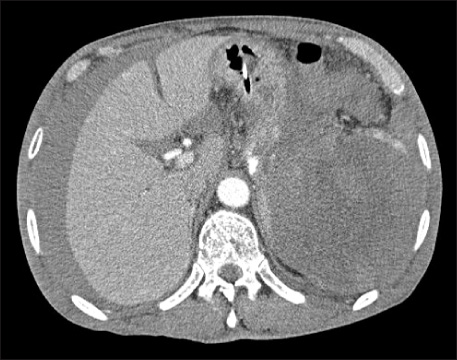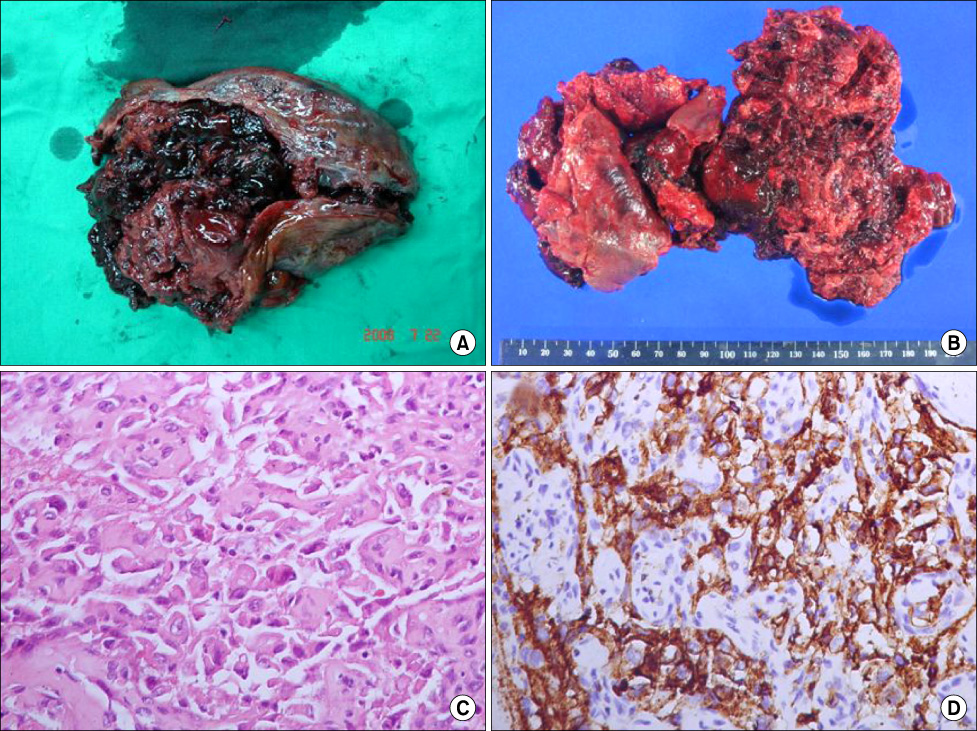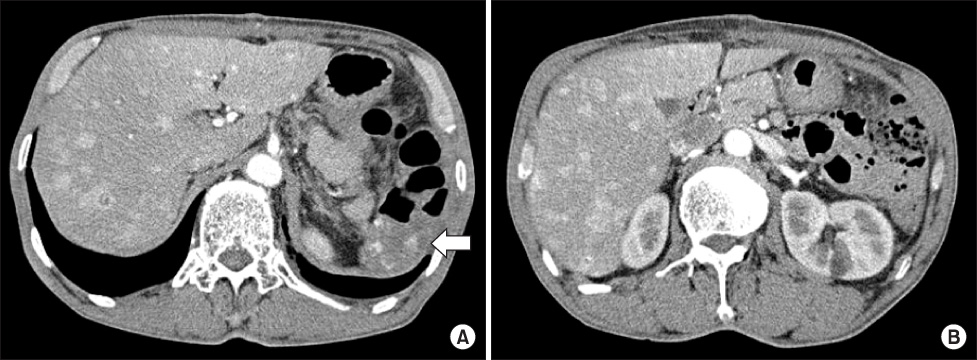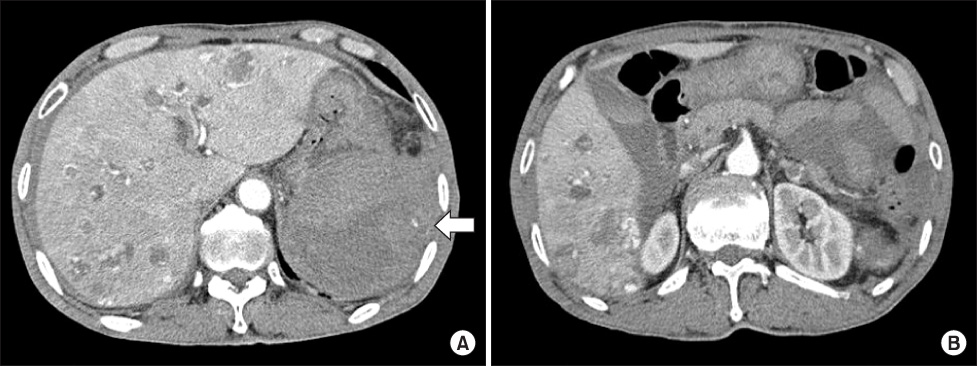J Korean Surg Soc.
2009 Oct;77(4):291-295. 10.4174/jkss.2009.77.4.291.
Spontaneous Rupture of Primary Angiosarcoma of the Spleen
- Affiliations
-
- 1Department of Surgery, Chonnam National University Medical School, Gwangju, Korea. wkafyddl@hanmail.net
- KMID: 1464890
- DOI: http://doi.org/10.4174/jkss.2009.77.4.291
Abstract
- Primary angiosarcoma of the spleen is an extremely rare malignancy, the pathogenesis of which is not completely understood, with high metastatic potential and an exceedingly poor prognosis, regardless of treatment regimen. The major complication is splenic rupture, which often leads to fatal hemoperitoneum. Overall, since 1879 when Langerhans described the first case of angiosarcoma of the spleen, there have been approximately 200 cases reported in the literature. Moreover, to the best of our knowledge, spontaneous rupture of primary splenic angiosarcoma and spontaneous rupture of remnant or recurred angiosarcoma is extremely rare, and no cases were reported in English literature. We report a case of spontaneous splenic rupture due to angiosarcoma in a 68-year-old man, and also review the existing literature.
MeSH Terms
Figure
Reference
-
1. Manouras A, Giannopoulos P, Toufektzian L, Markogiannakis H, Lagoudianakis EE, Papadima A, et al. Splenic rupture as the presenting manifestation of primary splenic angiosarcoma in a teenage woman: a case report. J Med Case Reports. 2008. 2:133.2. Buckner JW 3rd, Porterfield G, Williams GR. Spontaneous splenic rupture secondary to angiosarcoma. J Okla State Med Assoc. 1990. 83:211–213.3. Montemayor P, Caggiano V. Primary hemangiosarcoma of the spleen associated with leukocytosis and abnormal spleen scan. Int Surg. 1980. 65:369–373.4. Falk S, Krishnan J, Meis JM. Primary angiosarcoma of the spleen. A clinicopathologic study of 40 cases. Am J Surg Pathol. 1993. 17:959–970.5. Neuhauser TS, Derringer GA, Thompson LD, Fanburg-Smith JC, Miettinen M, Saaristo A, et al. Splenic angiosarcoma: a clinicopathologic and immunophenotypic study of 28 cases. Mod Pathol. 2000. 13:978–987.6. Keymeulen K, Dillemans B. Epitheloid angiosarcoma of the splenic capsula as a result of foreign body tumorigenesis. A case report. Acta Chir Belg. 2004. 104:217–220.7. Al'pidovskii VK, Suvorova EV, Halil MA. Angiosarcoma of the spleen with consumption coagulopathy. Ter Arkh. 1990. 62:124–126.8. Kinoshita T, Ishii K, Yajima Y, Sakai N, Naganuma H. Splenic hemangiosarcoma with massive calcification. Abdom Imaging. 1999. 24:185–187.9. Safapor F, Aghajanzade M, Kohsari M, Hoda S, Safarpor D. Spontaneous rupture of the spleen: a case report and review of the literature. Saudi J Gastroenterol. 2007. 13:136–137.10. Naka N, Ohsawa M, Tomita Y, Kanno H, Uchida A, Myoui A, et al. Prognostic factors in angiosarcoma: a multivariate analysis of 55 cases. J Surg Oncol. 1996. 61:170–176.
- Full Text Links
- Actions
-
Cited
- CITED
-
- Close
- Share
- Similar articles
-
- Spontaneous Rupture of the Spleen Secondary to Metastatic Choriocarcinoma
- A Case of Spontaneous Splenic Rupture in Vivax Malaria
- Spontaneous Splenic Rupture
- Spontaneous Rupture of Spleen in a Patient with Malarial Infection
- CT and MRI Findings of Primary Renal Angiosarcoma with Spontaneous Rupture and Venous Thrombosis: Case Report





